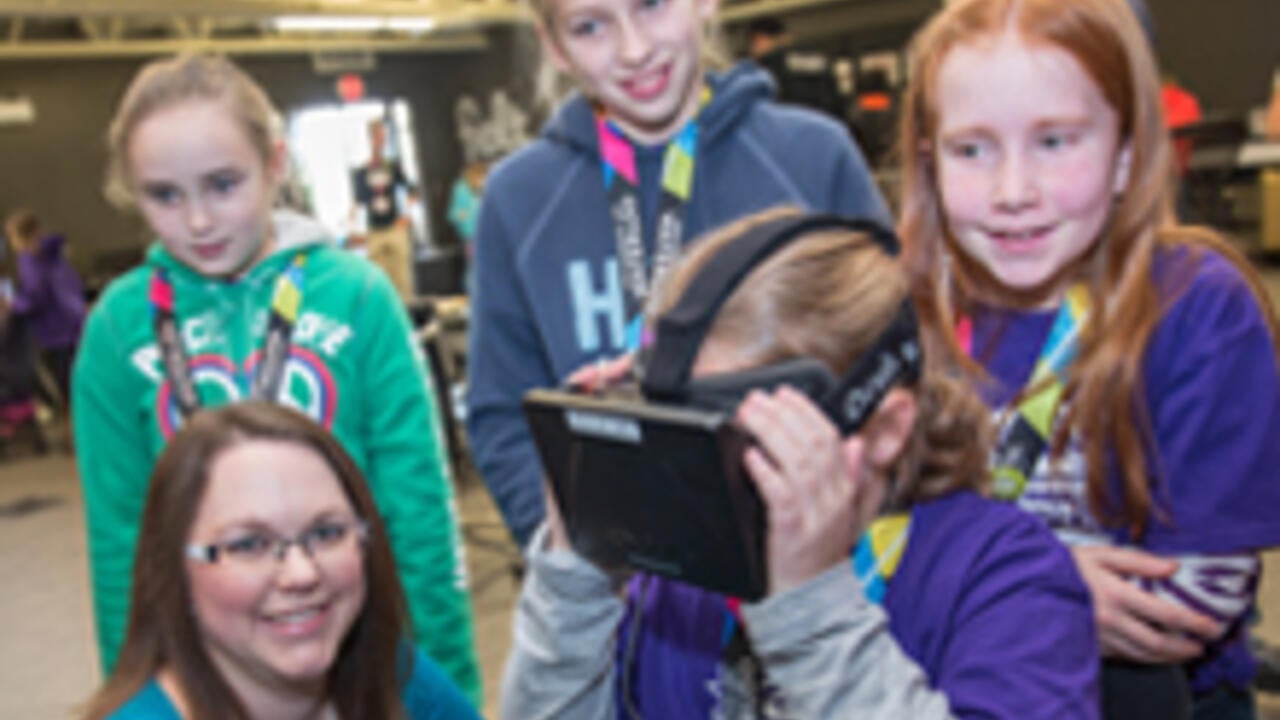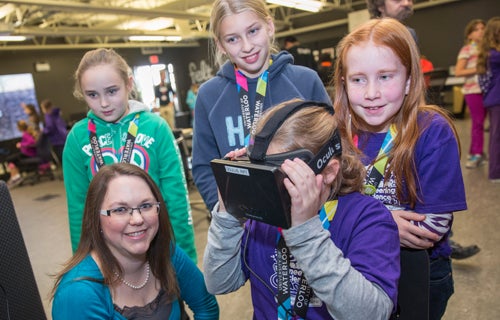
Waterloo Engineering: Most female first-year students ever
“It’s suddenly cool to be an engineer. Young women are learning more about engineering and choosing to study it,” says outreach dean

“It’s suddenly cool to be an engineer. Young women are learning more about engineering and choosing to study it,” says outreach dean
By Staff Marketing and Strategic CommunicationsYoung women make up 27 per cent of the first-year class studying engineering disciplines at the University of Waterloo this year - the largest number ever.
It’s a significant increase from a decade ago when only about 15 per cent of first-year students studying engineering were female. The jump is notable because Waterloo’s largest programs are electrical and mechanical engineering which are typically male-dominated, says Mary Wells, associate dean outreach for Waterloo Engineering.
Educators have been grappling with the persistent low enrollment of young women in science and engineering programs globally.
“I think we’ve really turned a corner,” says Wells. “Waterloo has put huge resources toward impactful community outreach; very high-quality programs like the Catalyst conference program for Grade 11 girls and Go ENG Girl. We’re starting to see the results.”
Go ENG Girl, a hands-on program for girls in Grade 7 to 10, is celebrating its tenth anniversary this year. The Ontario Network for Women in Engineering (ONWiE) designed the program to encourage girls to study engineering and science and so far more than 7,000 girls and 5,000 parents across the province have participated.

Jennifer Irwin at an Engineering Outreach event.
Outreach programs help young girls make choices because most of them have little contact with engineers in their daily life, added Wells. “Once girls find out what engineering is about they get very energized. It’s a very creative profession where they can have a real impact in the world,” she says.
Waterloo’s Faculty of Engineering had always hovered below the national average when it came to women in its first-year engineering class, but in 2011 the Faculty began to see its numbers rise above the national average.
Wells suspects young women who, as a group have higher high school averages than the pool of boys applying to engineering programs across Ontario, may be increasingly drawn to Waterloo’s program because it’s a research-intensive university.
More than 30 per cent of the girls who apply to engineering programs across Ontario have an above 90 average in high school versus just over 20 per cent of the male applicants.
“These young women tend to be academically stronger so they’re interested in research opportunities and they have a lot of choice when it comes to choosing a university,” says Wells.
Wells says a key message for high school students who want to keep their options open is to take Grade 12 physics. Ontario statistics show that only 33 per cent of the students enrolled in Grade 12 physics are girls, yet the senior physics course is a pre-requisite for engineering studies.

Read more
Here are the people and events behind some of this year’s most compelling Waterloo stories

Read more
A winter holiday message from President Vivek Goel

Read more
The Waterloo community comes together to remember, reflect and respond to gender-based violence
The University of Waterloo acknowledges that much of our work takes place on the traditional territory of the Neutral, Anishinaabeg, and Haudenosaunee peoples. Our main campus is situated on the Haldimand Tract, the land granted to the Six Nations that includes six miles on each side of the Grand River. Our active work toward reconciliation takes place across our campuses through research, learning, teaching, and community building, and is co-ordinated within the Office of Indigenous Relations.